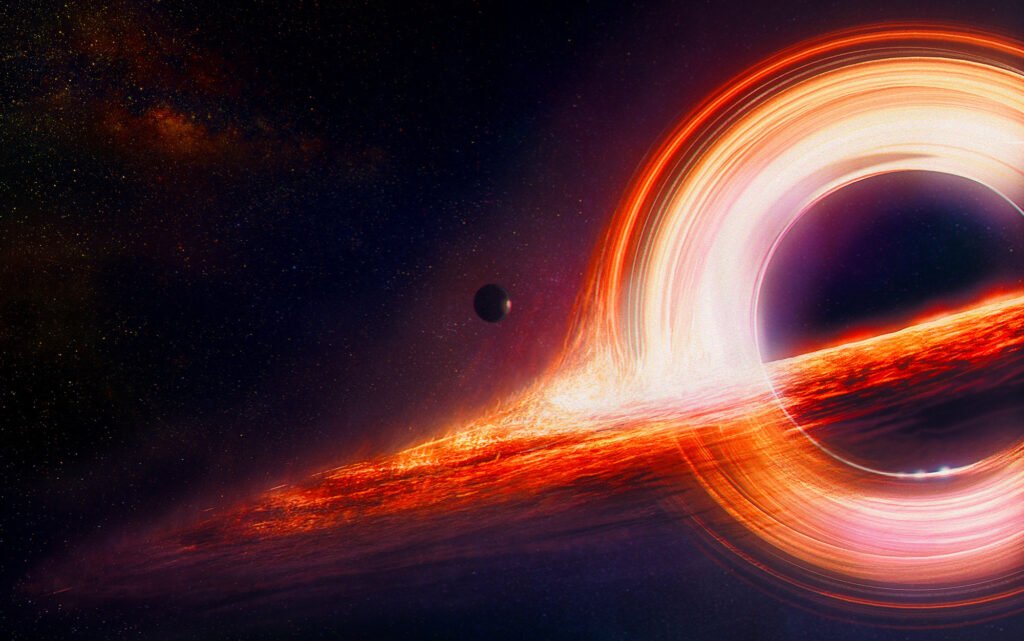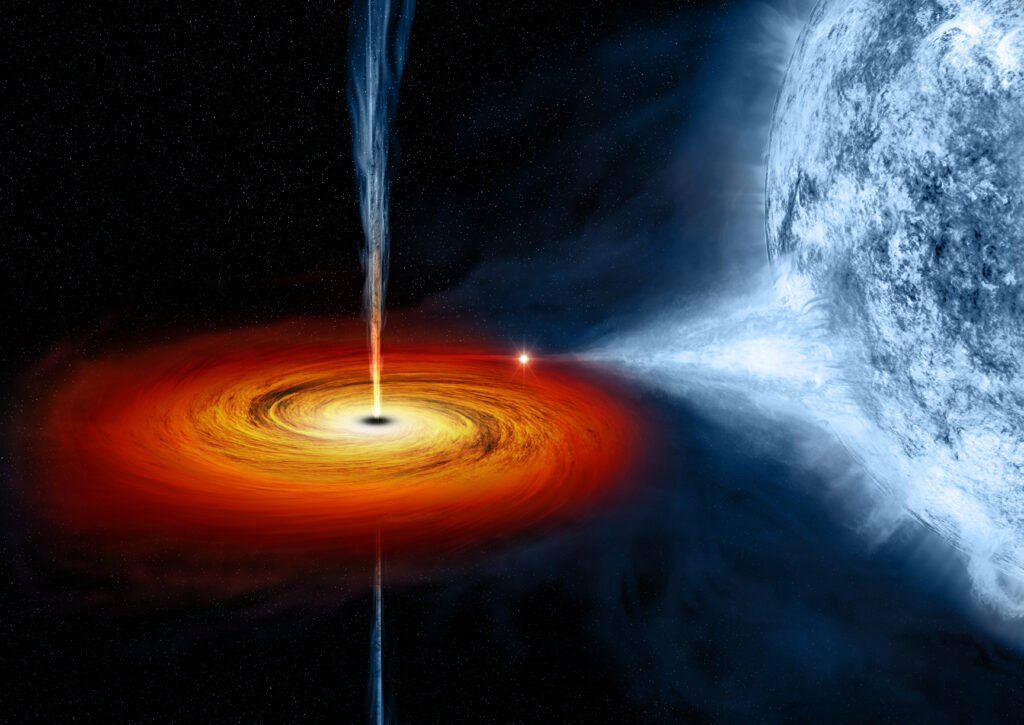A star that was split apart when it got too close to a massive black hole and had its interiors thrown out into space has been thoroughly investigated by astronomers.The amount of nitrogen and carbon close to a black hole that is known to have ripped apart a star was examined by NASA’s Chandra X-ray Observatory and the ESA’s XMM-Newton satellite. These substances, according to astronomers, were produced inside the star before it was shattered as it approached the black hole.”We are seeing the guts of what used to be a star,” said study leader Jon Miller of the University of Michigan. We can determine what kind of star perished by looking at the elements that were left behind.
In recent years, astronomers have discovered numerous instances of “tidal disruption events” in which a star is obliterated by the gravitational pull of a powerful black hole. The hot star’s debris produces a flare, which is frequently visible in optical, ultraviolet, and X-ray light. This incident, known as ASASSN-14li, is noteworthy for a number of reasons.It was detected in November 2014, making it the closest tidal disruption to Earth in around ten years (290 million light-years). Due to its close vicinity, ASASSN-14li has revealed a remarkable amount of information about the obliterated star. In comparison to earlier research, Miller’s team used new theoretical models to get more accurate estimations of the amount of nitrogen and carbon surrounding the black hole.

According to co-author Brenna Mockler of Carnegie Observatories and the University of California, Los Angeles, “These X-ray telescopes can be used as forensic tools in space.” The ratio of nitrogen to carbon that was discovered suggests that the material came from the interior of a dying star that was about three times as massive as the Sun.Thus, the star in ASASSN-14li is among the most massive stars that astronomers have yet to observe being shattered by a black hole, if not the most massive.
“ASASSN-14li is exciting because one of the hardest things with tidal disruptions is being able to measure the mass of the unlucky star, as we have done here,” co-author Enrico Ramirez-Ruiz of the University of California, Santa Cruz, stated. Because more massive stars are predicted to be much less common than lower-mass stars, watching one get wiped out by a supermassive black hole is mesmerising.

Another team of astronomers described the “Scary Barbie” event earlier this year, where they theorised that a star with roughly 14 times the mass of the Sun was obliterated by a black hole. While the estimated star mass is primarily dependent on the brightness of the flare rather than a thorough investigation of the surrounding material as with ASASSN-14li, this has not yet been confirmed as a tidal disruption.
What the ASASSN-14li findings signifies for future research is another intriguing feature of the finding. In the star cluster that houses the supermassive black hole at the centre of our galaxy, astronomers have observed stars of a moderate mass similar to ASASSN-14li’s. Astronomers may therefore be able to detect the presence of star clusters around supermassive black holes in farther away galaxies by being able to estimate the stellar masses of tidally shattered stars.Before this study, there was a good chance that the components seen in X-rays might have come from gas emitted in the supermassive black hole’s earlier outbursts. However, the pattern of elements examined here seems to have originated from a single star.

Chenwie Yang from the University of Science and Technology in Hefei, China, used ultraviolet data from NASA’s Hubble Space Telescope in earlier research published in 2017 to demonstrate that ASASSN-14li has enhanced nitrogen relative to carbon, though by a smaller amount than Miller’s team discovered using X-ray data. The star was only discovered to be slightly more massive than 0.6 times that of the Sun by those
The new paper, which can be found here, was released in The Astrophysical Journal Letters on August 20, 2023. Jeremy Drake (Centre for Astrophysics | Harvard & Smithsonian), John Raymond (CfA), Mark Reynolds (University of Michigan), Xin Xiang (University of Michigan), Sol Bin Yun (University of Michigan), and Abderahmen Zoghbi (University of Maryland) are the other authors of the paper in addition to Miller, Mockler, and Ramirez-Ruiz.writers.




































